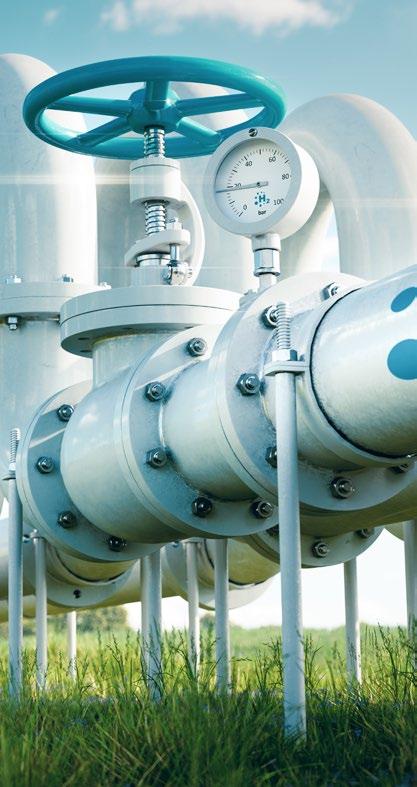
2 minute read
VARIABLE SPEED DRIVES: AN ESSENTIAL TECHNOLOGY FOR THE ENERGY SECTOR’S FUTURE
Variable speed drives (VSDs) are electronic devices commonly used in commercial and industrial settings to improve energy efficiency and enhance process control. They control the speed of an electric motor by adjusting the frequency of the electrical power supplied to the motor.
The efficiency of a VSD is determined by how effectively it converts the electrical power supplied to it into mechanical power delivered to the motor. Several factors can influence the efficiency of a VSD system. Firstly, the design and components of the VSD itself play a crucial role. High-quality VSDs from reputable manufacturers offer better efficiency and reliability than lower-quality alternatives.
Advertisement
The type of motor being controlled also affects VSD efficiency. Different motor types have varying efficiency characteristics, and the VSD must be compatible with the specific motor. Additionally, the operating conditions of the system and the control strategy used can impact efficiency. Optimization of the control strategy and adjusting its settings to match the motor and load conditions can improve power factor and efficiency.
The power factor is an important consideration for VSD efficiency. A low power factor can lead to increased energy consumption, higher costs, and potential power quality issues. Power factor correction capacitors can be employed to reduce reactive power consumption and enhance system efficiency.
Another factor to address is harmonics. VSDs generate harmonics due to their high-frequency switching and pulse-width modulation. These harmonics can interfere with other equipment in the electrical system and reduce overall system efficiency. Filters and other mitigation measures can be implemented to minimize the impact of harmonics.
Operating temperature is critical for VSD and motor efficiency. High temperatures can diminish the efficiency and lifespan of electronic components as well as motor insulation materials, resulting in decreased performance and potential failures. Proper cooling systems, such as air-cooling or liquid cooling, must be in place to maintain optimal temperature levels and prevent overheating.
System design and layout are also crucial factors in VSD efficiency. Poor system design, such as long cable runs or insufficient voltage supply, can lead to voltage drop and reduced system efficiency. Furthermore, the quality of VSD components and the manufacturing process can affect efficiency and reliability. It is advisable to choose high-quality VSDs to ensure optimal performance and longevity.
When evaluating VSD systems, the overall cost-effectiveness should be considered. While high-quality VSDs may have a higher upfront cost, they often provide significant energy savings and reduced maintenance costs over the system's lifespan.
In conclusion, maximizing the efficiency and reliability of a VSD system involves selecting high-quality VSDs, properly sizing and installing the VSD and motor system, conducting regular maintenance and cleaning, considering the overall costeffectiveness, and ensuring proper cooling systems and mitigation measures are in place. By considering these factors, industries and commercial enterprises can optimize their energy usage, reduce costs, and improve process control.
Chemist Wael Essam El Rayes CEO Deputy Ass -General Petroleum Company
VALUE AND VOLUME OF SHARES TRADED FOR ENERGY & SUPPORT SERVICES SECTOR IN JUNE 2023
PERFORMANCE OF PETROLEUM COMPANIES IN THE EGYPTIAN EXCHANGE IN JUNE 2023
Source of Raw Data: CBE CAPMAS Egyptian Exchange PMI by S&P Global
*From June 27th to July 3rd was a Public Holiday
LINKING THE RAVEN FIELD TO THE WESTERN DESERT NATURAL GAS COMPLEX: 1ST PHASE*
AGREEMENT TO DEVELOP PHASE 10 AT WDDM CONCESSION*
SIGNING









